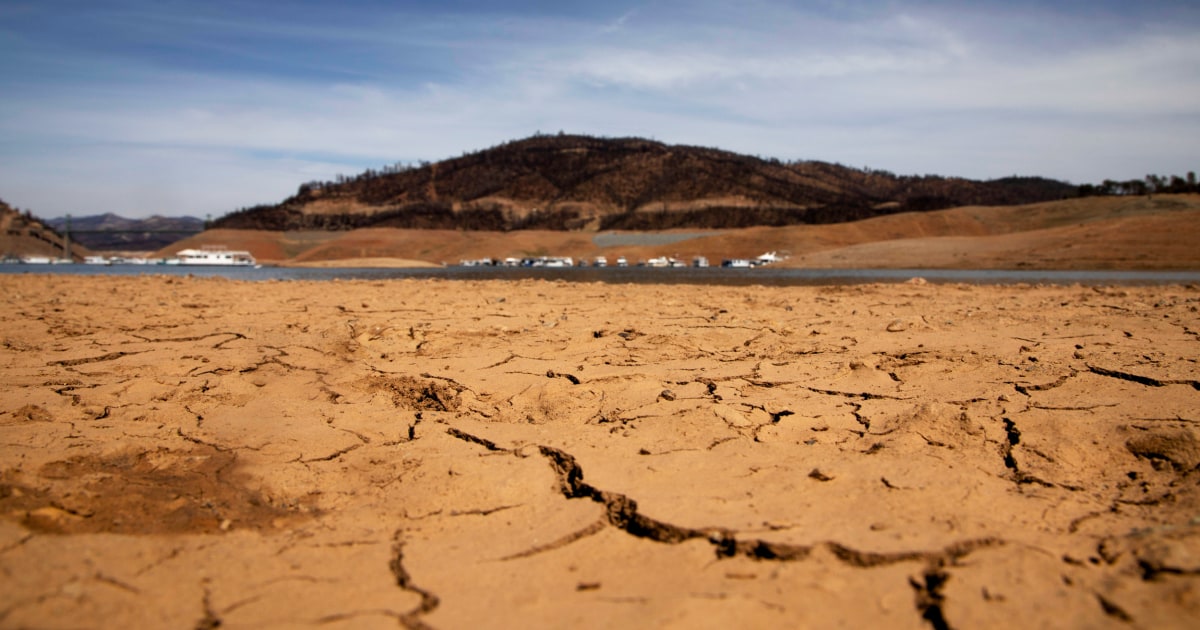
LOS ANGELES — California Gov. Gavin Newsom called on residents Thursday to voluntarily cut back on their water consumption by 15 percent as the state dives further into drought and temperatures continue to soar past seasonal averages.
Newsom, a Democrat who faces a recall election in September, expanded a regional drought state of emergency to 50 of California’s 58 counties, home to about 42 percent of the population.
Large counties like Los Angeles, San Diego and San Francisco are not included in the emergency proclamation.
“We’re hopeful that people will take that mindset they brought into the last drought and extend that forward with a 15 percent voluntary reduction, not only on residences but industrial commercial operations and agricultural operations,” Newsom told reporters in San Luis Obispo County.
The state of emergency authorizes the California Water Resources Control Board, which oversees the state water supply, to reduce the right to divert water from rivers if there is a shortage. It also allows state agencies to more easily transfer water for priority use.
A statewide drought declared in 2014 by Gov. Jerry Brown remained in place for three years. That drought depleted groundwater supplies and changed how residents and businesses use water, including rethinking landscaping to include more drought-tolerant plants. It also drew the attention of Donald Trump, who ridiculed the state’s emergency response and declared as he was running for president in 2016 that no drought was threatening California.
California is not yet at the crisis levels experienced during the last drought, but residents should prepare now for what could become a greater environmental challenge in years to come, warned Alex Hall, director of the Center for Climate Science at the University of California, Los Angeles.
“We live in a place where water resources are really volatile,” he said. “Different parts of the state are vulnerable. There are farmers in the Central Valley that are losing their livelihoods because there isn’t enough water.”
Across the state urban water use is down by 16 percent since before the previous drought, Newsom said Thursday. But with temperatures rising and no precipitation expected for several more months, the entire state could soon be under a state of emergency.
While 50 counties are now in a state of emergency, “I imagine it is a question now of time whether those others will more quickly enter into the fold,” Newsom said.
The governor has steadily added more counties to the state of emergency in recent months. In May, he expanded the proclamation to include 41 counties, up from two in April. Still, he is taking a cautious approach, relying on hydrology reports from state and local water agencies before issuing more drastic measures.
Asked whether climate change is to blame, Newsom did not hesitate.
“Those are the effects of climate change. It’s here, and it’s human-induced,” he said. “I think in the state of California we’ve moved beyond the debate and are moving toward finding a solution.”
According to the U.S. Drought Monitor, a federal agency, 100 percent of California was abnormally dry Thursday and nearly 95 percent of the state was in severe drought. More than 30 percent of the state, including several Northern California counties, are under exceptional drought conditions, a harbinger of increased fire risk and low survival rates for native plants and wildlife.
At least two dozen wildfires were burning throughout the state Thursday. California had already experienced 3,856 fires from Jan. 1 to July 4, compared to 3,297 during the same period last year, according to the California Department of Forestry and Fire Protection.
Despite the worsening drought, Newsom stressed that water restrictions are voluntary, highlighting “common sense” strategies like watering lawns less frequently, taking shorter showers and waiting to run large appliances, like washing machines and dishwashers, until loads are full.
Source: | This article originally belongs to Nbcnews.com









